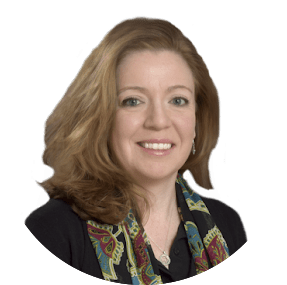
Dr. Elizabeth Marie Philipone, DMD
Associate Professor of Dental Medicine (in Pathology and Cell Biology) at Columbia University Irving Medical Center; Director of the Oral Pathology Residency Program at Columbia University Irving Medical Center
Dr. Philipone teaches the Oral Pathology course for second- and third-year dental school students; the course typically enrolls around 60 students. The course had already undergone a flipped model revision prior to the shift to remote teaching in Spring 2020. Dr. Philipone met the moment by embracing the flipped model and providing opportunities for engagement throughout course materials. Read on to learn more about what Dr. Philipone did in her course, what lessons and experiences she’s carrying forward, and the advice she has for other instructors at Columbia.
Embrace the Flipped Classroom Model
Just before the pandemic, maybe around two years before, my colleague, Dr. Salentijn began working with faculty to flip some of the school’s second- and third-year classes. She had a grant and started looking at the classes offered to see which might be most conducive to a flipped classroom setup. Because the class I teach was very lecture-based to provide background information, supported by conference-based learning for discussion, it was a good fit. Over that summer, we recorded all of our lectures and worked with work-study students to animate them. Students would watch the recordings before class, and we could use in-class time to do case conferences–scenarios focused around the given topic of the lecture. This model became instrumental with the pandemic. Because we had already done the work, we just had to convert our case conferences into a Zoom format.
As we move forward, we’ve continued with this flipped model. We’ll return to in-person case conferences. I want to keep that combined approach–keep the flipped lectures but do the case conferences in person. That way both the students and myself get the positives of both: the innovation and the in-person, classroom setting.
Provide Opportunities for Engagement Throughout Course Materials
With the flipped classroom, students knew what to expect from the class. They knew to watch the recordings and come to the case conferences prepared to apply what they learned. We also embedded self-study quizzes into the modules. These helped instructors gauge where students were, giving us real time feedback. It also helped students get an idea of what we’re focusing on; it gave them a bit of a hint, so they knew the topic was something particularly important. The fact that they’re not graded also helps take some of the pressure off the students. They’re just really self-study for the students.
For the case conferences, based on what students learned from lectures, we’d introduce the patient care aspects and clinical scenarios. We’d ask students to apply what they learned from the lectures: based on what you learned, what would be the differential diagnoses? Even from our initial flip, the feedback from students was that they really liked this approach, even more than I thought they would. They ended up requesting more case conferences. Based on that feedback, we’re going to offer extra sessions on Zoom for those students who might want to cover more or have extra interest.
Advice for Instructors and the Future of Teaching at Columbia
Start small, collect feedback, and iterate.
I think a hybrid format is probably the way of the future just because of the flexibility it offers, the convenience. With just online, students don’t always associate with a physical person. I think once they know you, as a person, they’re more apt and comfortable to participate when it’s remote.
Try to flip a small portion of a course. Flipping gives the flexibility for instructors and students, even with something as simple as bad weather or a snow storm. It’s a convenience for everyone. Ideally, you could start with a small section, get some student feedback, and if it’s well received, maybe try another section. I think the feedback from students is really important; hear what they have to say about the innovations you’re making and if you’re going on the right path with them. Not everyone is going to like everything, there’s going to be a mix. But if you can kind of gauge the overall sense of the feel of the class, I think that’s helpful.